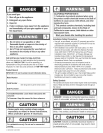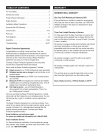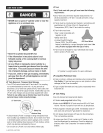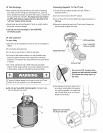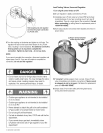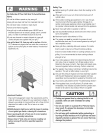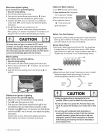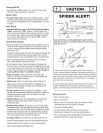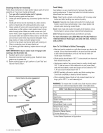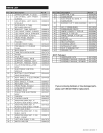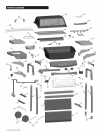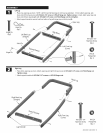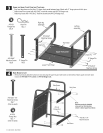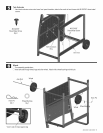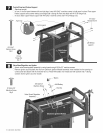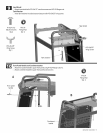Special offers from our partners!

Find Replacement BBQ Parts for 20,308 Models. Repair your BBQ today.
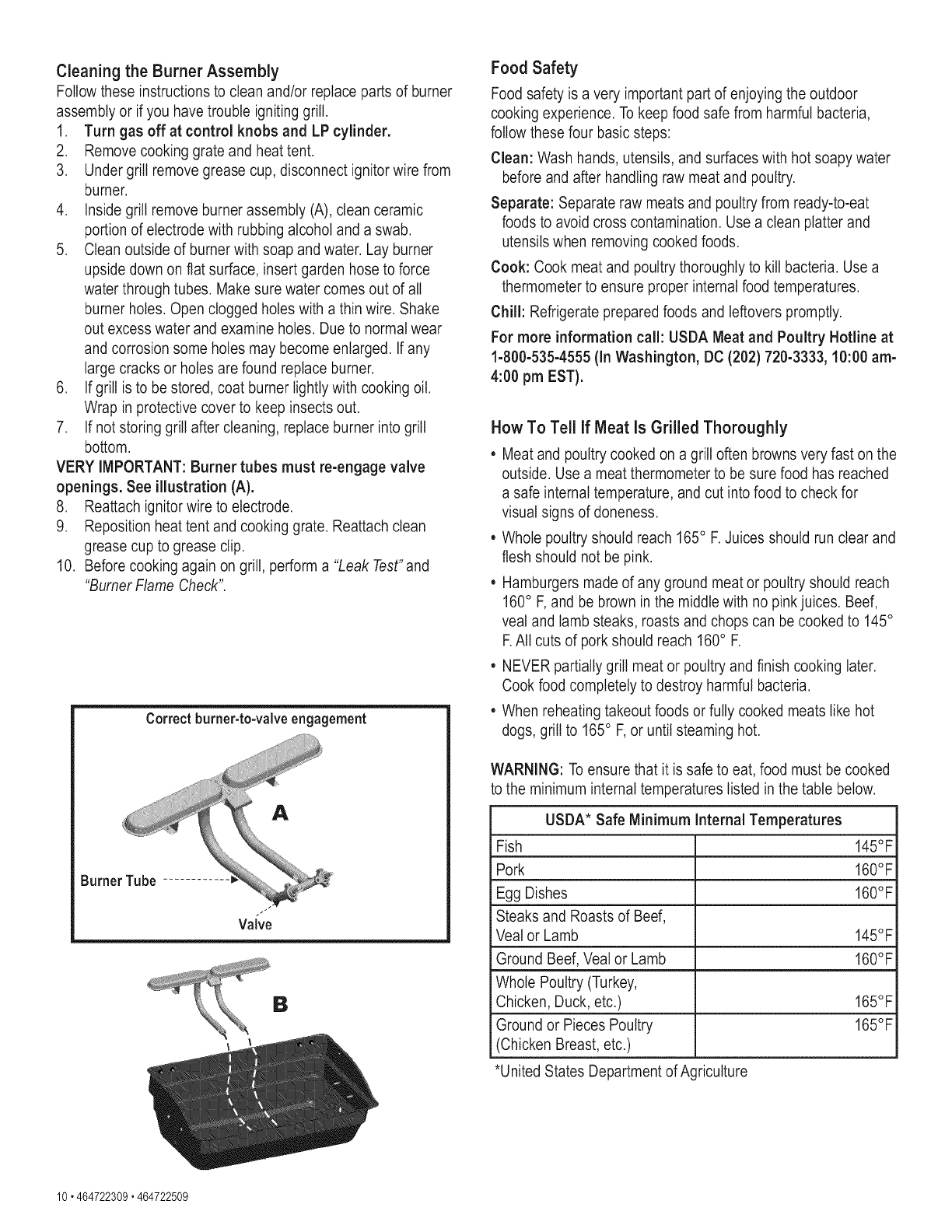
Cleaning the Burner Assembly
Follow these instructions to clean and/or replace parts of burner
assembly or if you have trouble ignitinggrill.
1. Turn gas off at control knobs and LP cylinder.
2. Remove cooking grate and heat tent.
3. Under grill remove grease cup, disconnect ignitor wire from
burner.
4. Inside grill remove burner assembly (A), clean ceramic
portion of electrode with rubbing alcohol and a swab.
5. Clean outside of burner with soap and water. Lay burner
upside down on flat surface, insert garden hose to force
water through tubes. Make sure water comes out of all
burner holes. Open clogged holes with a thinwire. Shake
out excess water and examineholes. Due to normal wear
and corrosion some holes may become enlarged. Ifany
large cracks or holesare found replace burner.
6. If grill is to be stored, coat burner lightly with cooking oil.
Wrap in protective cover to keep insects out.
7. If not storing grill after cleaning, replace burner intogrill
bottom.
VERY IMPORTANT: Burner tubes must re-engage valve
openings. See illustration (A).
8. Reattach ignitor wire to electrode.
9. Reposition heat tent and cooking grate. Reattach clean
grease cup to grease clip.
10. Before cooking again on grill, perform a "Leak Test'and
"Burner Flame Check".
Correctburner-to-valve engagement
A
BurnerTube
Valve
13
Food Safety
Food safety isa very important part of enjoying the outdoor
cooking experience. To keep foodsafe from harmful bacteria,
follow these four basic steps:
Clean: Wash hands, utensils, and surfaceswith hot soapy water
beforeand after handling raw meat and poultry.
Separate: Separate raw meats and poultry from ready-to-eat
foods to avoid cross contamination. Use a clean platter and
utensils when removing cooked foods.
Cook: Cook meat and poultry thoroughly to kill bacteria. Use a
thermometer to ensure proper internalfood temperatures.
Chill: Refrigerate prepared foods and leftovers promptly.
For more information call: USDA Meat and Poultry Hotline at
1-800-535-4555 (in Washington, DC (202) 720-3333, 10:00 am-
4:00 pm EST).
How To Tell If Meat Is Grilled Thoroughly
• Meat and poultry cooked on a grill often browns very fast on the
outside. Use a meat thermometer to be sure food has reached
a safe internal temperature, and cut into food to check for
visual signs of doneness.
• Whole poultry should reach 165° F.Juices should run clear and
flesh should not be pink.
• Hamburgers madeof any ground meat or poultry should reach
160° F, and be brown in the middlewith no pinkjuices. Beef,
veal and lamb steaks, roasts and chops can be cooked to 145°
F.All cuts of pork should reach 160° F.
• NEVER partially grill meat or poultry and finish cooking later.
Cook food completely to destroy harmful bacteria.
• When reheating takeout foods orfully cooked meats like hot
dogs, grill to 165° F,or until steaming hot.
WARNING: Toensure that it is safe to eat, food must be cooked
to the minimum internal temperatures listed in the table below.
USDA* Safe Minimum Internal Temperatures
Fish 145°F
Pork 160°F
Egg Dishes 160°F
Steaks and Roasts of Beef,
Veal or Lamb 145°F
Ground Beef, Veal or Lamb 160°F
Whole Poultry (Turkey,
Chicken, Duck, etc.) 165°F
Ground or PiecesPoultry 165°F
(Chicken Breast,etc.)
*United States Department ofAc ricutture
10,464722309 °464722509



